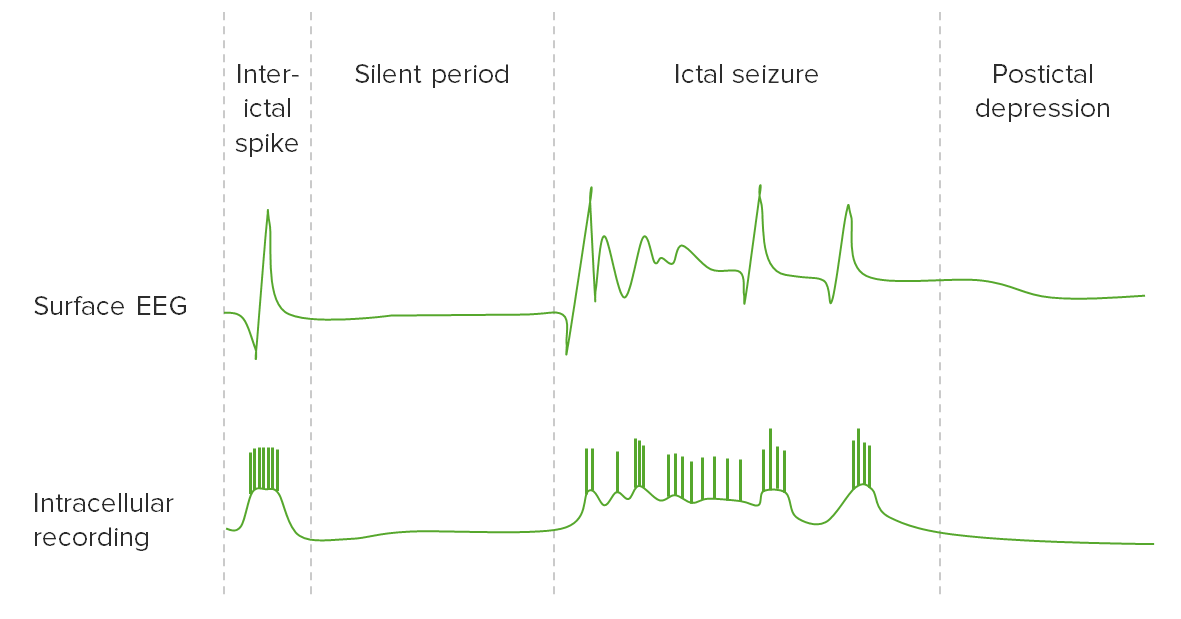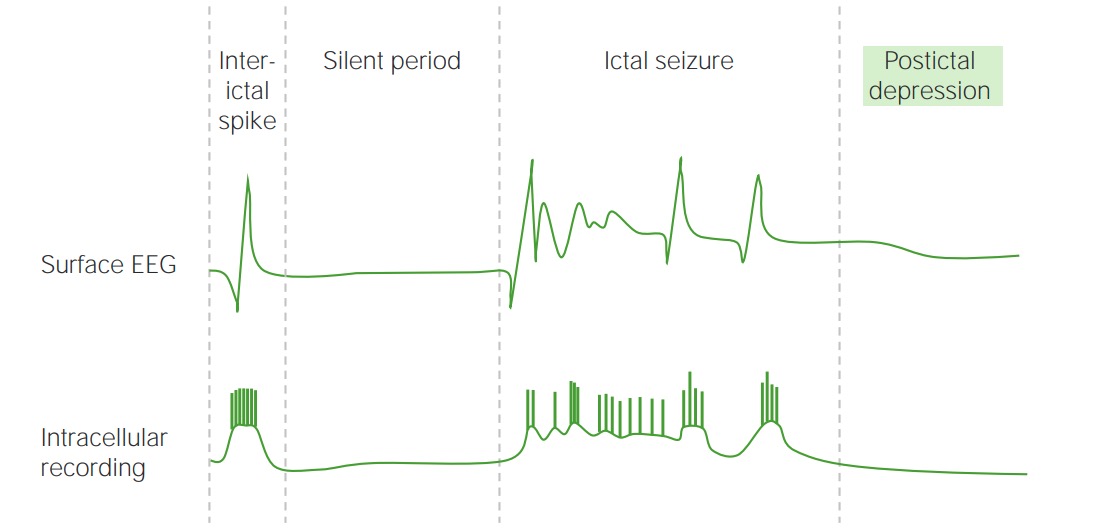Playlist
Show Playlist
Hide Playlist
Second Seizure: Summary and Precautions
-
Slides Seizures Epilepsy New Onset Seizure.pdf
-
Download Lecture Overview
00:01 So in summary, the diagnostic investigation of a patient with a first time seizure is focused on figuring out the risk of a second seizure event. 00:09 What is the risk of a second seizure? At 3 years in general, the risk is 40%. 00:15 And we're using our findings on history, physical examination, EEG and MRI to determine whether that risk is higher than 40% or lower than 40%. 00:26 Risk of a seizure with early and late treatment is still around 76 to 77%. 00:31 So regardless of whether we initiate early treatment or not, the risk of a second seizure is about the same. 00:38 And so typically, for a first time seizure, we would not initiate treatment. 00:42 But there's some characteristics that raise our concern. 00:46 So I'm going to walk through a table that can help us to see and understand these findings. 00:51 What we're looking at here is the risk of a second seizure. 00:54 And again, we said the risk of a second seizure in general is about 40%. 00:59 If we look on history about whether the patient has a remote history of seizure. 01:03 If there's no history of seizure, that risk stays at 40%. 01:07 If the patient has a history of febrile seizures, or a post traumatic seizure many years ago, the risk goes up to 60%. 01:14 And we'd be more concerned. 01:16 When we think about the seizure type, a generalized seizure, the risk of second seizure is 40%. 01:21 With a focal onset or partial onset seizure, that risk is higher at 60%. 01:26 If the EEG is normal, our second seizure risk goes down to 26%, it's low. 01:31 If abnormal, it's up to 56%. 01:35 And if we think about the state of the patient seizures happening out of awakeness, that risk is low. 01:40 But out of sleep, the risk of second seizure goes high. 01:43 So again, we're using these findings to determine what the risk of a second seizure is, and that will be used to calibrate whether we want to start treatment or not. 01:53 The last thing we think about when evaluating patients with the first time seizure is counselling. 01:58 And really counselling for the event if a second seizure were to occur. 02:02 We think about seizure precautions, what patients should do and not do given the risk of a potential seizure. 02:08 Seizure, first aid what a caregiver should do at the time of a second seizure, and in general patient education. 02:15 So how dangerous is a seizure? Seizures actually aren't life threatening in most situations. 02:21 In terms of the primary risk of the seizure, brain injury is unlikely unless there's very prolonged tonic-clonic activity or severe status epilepticus. 02:31 Ictal apnea can occur, but it's very rare except in neonates and so patients usually don't stop breathing during a seizure. 02:39 SUDEP which is sudden unexplained death and epilepsy is a risk, and that's the one life threatening risk in epilepsy. 02:48 We don't know why patients die in some situations with epilepsy. 02:52 That's why it's sudden unexplained death in epilepsy. 02:56 This tends to be more common or more commonly occur in patients with refractory epilepsy that occur frequently at night. 03:02 But in general, the risk of dying during a seizure is very low. 03:07 There are potential secondary risks. 03:09 When patients are bathing or swimming, a seizure could cause them to drown or patients could drown during their seizure. 03:16 When driving patients could suffer from an accident. 03:19 And then there are various activities where we would be concerned if the patient lost consciousness that could lead to injury. 03:25 And so when thinking about seizure precautions, we counselled them not to take bus unattended or swim unattended. 03:32 Patients are not allowed to drive and there's varying rules and regulations about when patients can go back to driving after a seizure. 03:38 And various activities where if the patient were to lose consciousness or have altered awareness, we would counsel against those. 03:46 In terms of seizures at home, we counsel patients on first aid what to do if a seizure happens. 03:51 Patient should be placed in a safe position, typically on their lateral side, laying on their side. 03:58 Patients and caregivers or caregivers should clear everything out away from the patient so they can't hurt themselves during the event. 04:05 We ask family members not to restrain movements or restrain patients and not to stick anything into a patient's mouth. 04:11 Patients may bite their tongue, they won't bite their tongue off. 04:14 And with anything in their mouth that won't prevent the tongue biting just put them at risk for having an injury from that being in their mouth. 04:21 And we ask family members to stay away from the patient, and about 90 to 95% of seizures will resolve spontaneously within 1-3 minutes. 04:30 For patients with a first time seizure who suffer a second seizure, we would typically ask for the patient to come in for emergent evaluation. 04:38 To evaluate what may be causing that and to initiate treatment. 04:42 For patients with refractory epilepsy that have frequent seizures. 04:45 Many stay at home during or after a seizure and can be managed over the phone or in the clinic for further evaluation of their epilepsy.
About the Lecture
The lecture Second Seizure: Summary and Precautions by Roy Strowd, MD is from the course Seizures and Epilepsy.
Included Quiz Questions
What information should be conveyed to patients during seizure counseling?
- Dangers associated with swimming and driving.
- Brain injury often being a direct result of a seizure.
- Placing a spoon in the mouth to prevent tongue biting during seizures.
- Restraint during seizures in preventing bodily injury.
- Immediate placement in a supine position during seizures.
Customer reviews
5,0 of 5 stars
| 5 Stars |
|
5 |
| 4 Stars |
|
0 |
| 3 Stars |
|
0 |
| 2 Stars |
|
0 |
| 1 Star |
|
0 |





